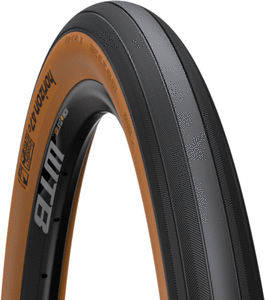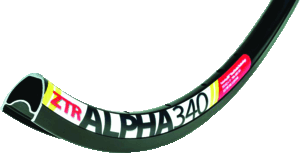Tubeless tires are now commonplace in the mountain bike world, and tubeless technology is gaining popularity again in the road cycling world as well, but that doesn’t mean that the technology is always well understood by those who adopt it. When you get the magic tire and rim combination on your tubeless wheels, the system is unbeatable. However, if you manage to find a combination that doesn’t work, the consequences can range from annoying to disastrous. Here are the facts you need to know about tubeless tire systems, the different systems on the market, and how to ensure that you purchase the right combination for your bike!
Three Systems:
There are three major tubeless systems on the market today- Mavic’s’ UST (Universal Standard Tubeless), WTB’s TCS (Tubeless compatible system, and other systems like Stans No-Tubes, which for the purpose of this article we’ll refer to as SNT, because acronyms are a mainstay of the cycling industry.
UST, conceived by Mavic in the late 1990’s, uses a specifically shaped rim and tire bead combination to lock both together. UST systems require no fluid or tape to seal them, as the inner rim surface is designed to be air-tight. UST systems tend to be heavier and costlier than other systems, but generate a very positive fit between tire and rim.
TCS, WTB’s kick at the tubeless can, might be the simplest yet. Refining some aspects of the solution conceived by Stan’s, WTB use a standard hooked-bead rim and tires with a more aggressive and larger bead to guarantee a good seal. Due to their larger tire beads and rim profiles, TCS systems are less likely to roll or squirm under lateral loads at low pressures, and tend to seat themselves more easily. They do still require sealant and tubeless-specific rim tape, however.
SNT, the ubiquitous Stan’s No-Tubes solution, is the most common tubeless style out there, as most wheels/tires can be converted to run tubeless using this method. Converting a standard wheel to SNT requires a valve, sealant tape, and Stan’s own tire sealant, to seal the tire. With those 4 items in place, virtually any wheel can be converted to tubeless. The advantage of the Stan’s solution is it’s universality and simplicity. Almost any tire and rim combination can be converted int his way. The downside to Stan’s is that without a standard for bead dimensions or tire diameters across the industry, you aren’t guaranteed a perfect fit. If your tire and rim aren’t perfectly mated, as they would be with a system like TCS, you run the risk of breaking the tubeless seal under hard cornering and losing air.
The take-away.
If you’re thinking of converting to tubeless and want the simplest and least expensive system, use Stan’s No-Tubes in conjunction with the rim and tire combination that you already own. If you want a simple, inexpensive and light solution with some limitations on your choice of tires and rims, use a TCS system from WTB. These promise a more secure and reliable seal than a system using Stan’s, but ideally use both WTB rims and tires. While mixing and matching other brands with WTB products is definitely possible, mounting WTB tires on Stans rims should be avoided.
So there you have it, tubeless technology in a nutshell. If you’re considering making the swap to tubeless, head here for full instructions, or watch the video below!
The parts and supplies necessary to set your bike up tubeless can be found through your local Live to Play Sports dealer!
TPI: 60
Usage: Gravel / Adventure / Pavement
• Road PLUS!
• Smooth Centerline fast rolling on tarmac
• All weather herringbone cornering tread
$87.99
Use: Performance Cyclocross / Road
• The short sidewalls and wide inside rim cavity allow for lower tire pressure while maintaining a firm tire feel
• 350 g
$149.99








